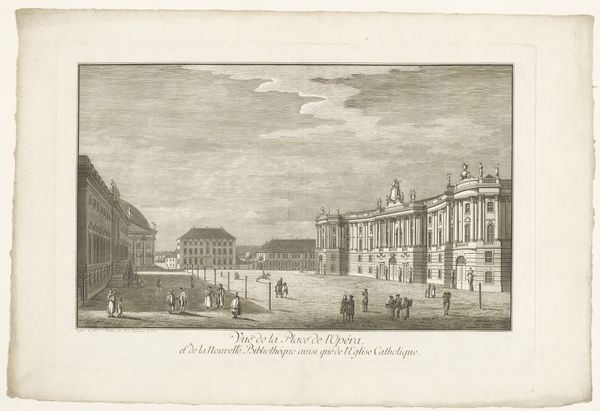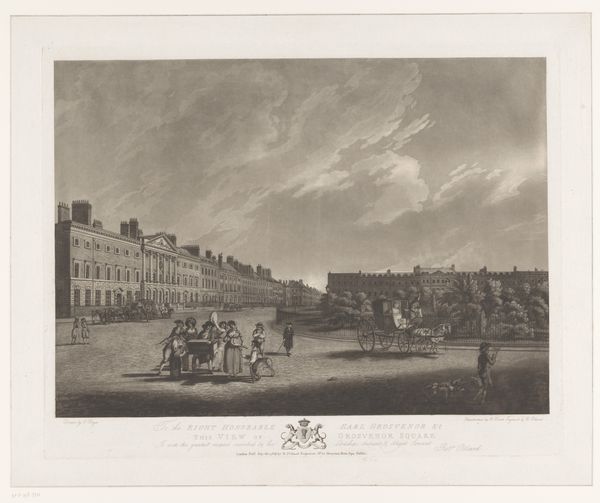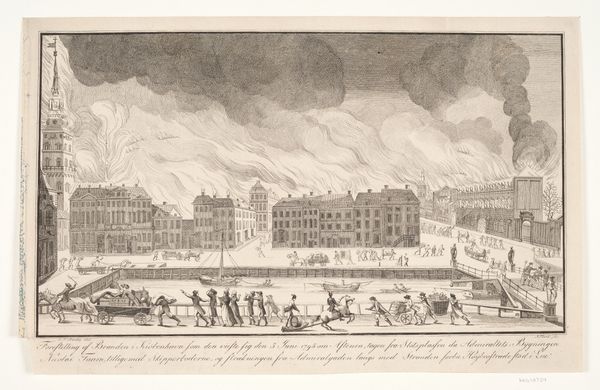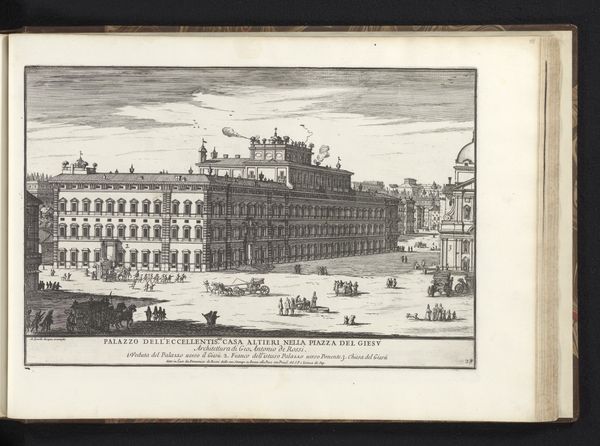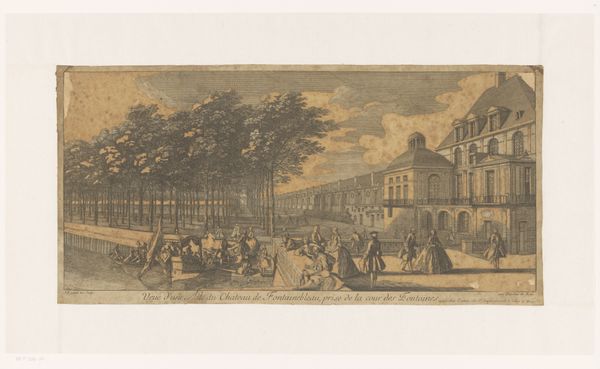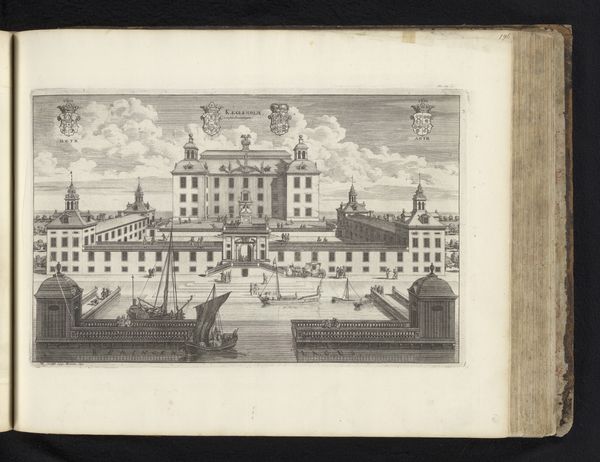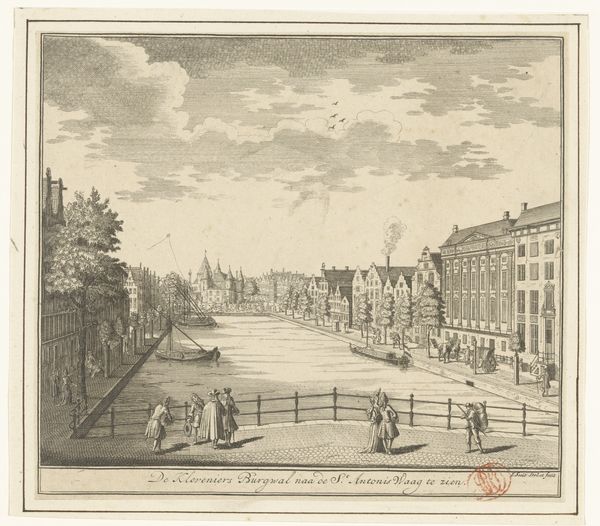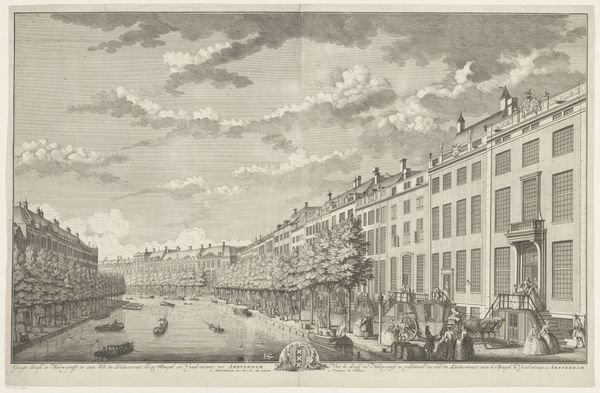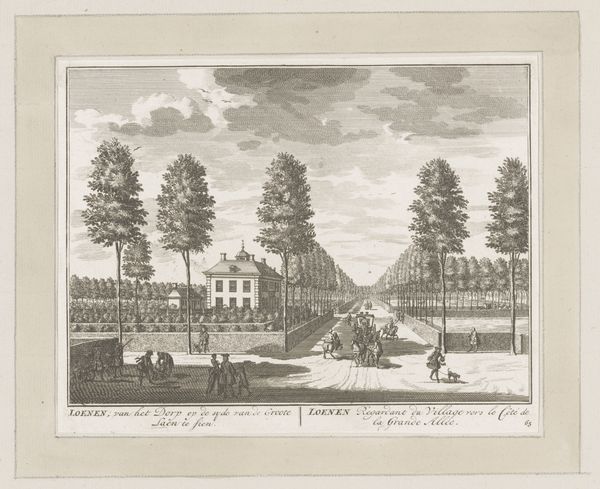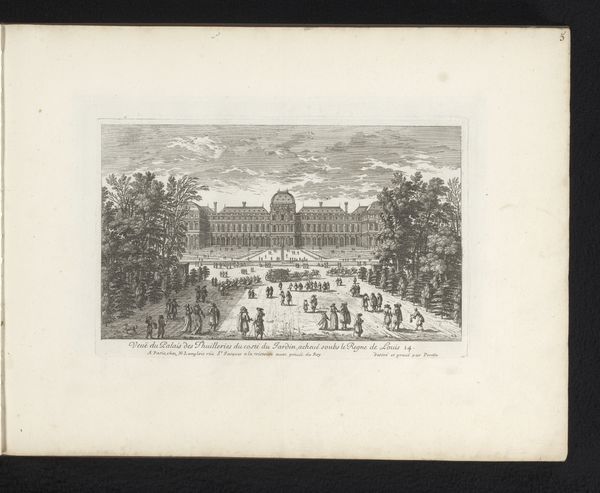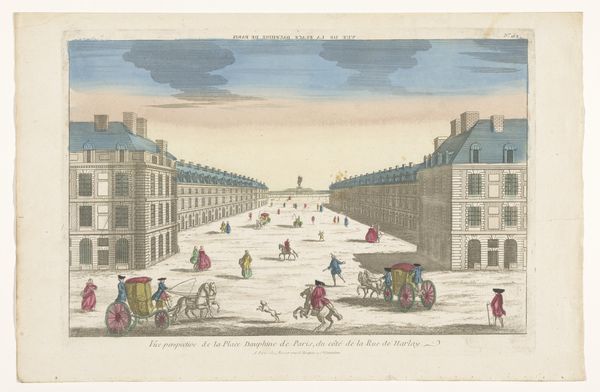
Gezicht op het Diaconie Oude Vrouwen- en Mannenhuis te Amsterdam c. 1700 - 1772
0:00
0:00
janismit
Rijksmuseum
print, etching
#
dutch-golden-age
# print
#
etching
#
landscape
#
etching
#
cityscape
Dimensions: height 174 mm, width 202 mm
Copyright: Rijks Museum: Open Domain
Curator: This etching, titled "View of the Diaconie Old Women's and Men's Home in Amsterdam", is attributed to Jan (I) Smit and dates back to somewhere between 1700 and 1772. What strikes you initially about its aesthetic? Editor: The stark contrast between the almost clinical precision of the buildings and the fluid, somewhat chaotic rendering of the figures on the bridge immediately grabs my attention. The buildings exude a certain institutional order, while life flows more freely. Curator: Precisely. Note how Smit utilizes line to create contrasting textures and depth. The buildings are rendered with tight, parallel lines that establish their formal structure. Then consider how the open expanse of the sky creates atmospheric perspective and offers relief. The billowing clouds contrast with the city's straight lines and architecture. Editor: It's as if the artist consciously separates social structures and personal narratives. Consider that institution for old men and women and reflect on the people represented on the bridge. Those figures seem to reflect on a diverse society with different values of what is commonly understood of care or lack of, and poverty and access within Amsterdam's society. Curator: Absolutely. Consider that printmaking itself during this period had a public function, widely disseminating imagery, cityscapes like this contributed to forming and reinforcing a sense of collective identity. The choice to depict a charitable institution likely reflected a societal emphasis on civic duty and the care of the vulnerable, so it seems to me the people represented could well be passers by or people in charge. The choice to disseminate through printed material had that intended purpose in that society, perhaps with even propaganda involved, perhaps in response to particular circumstances. Editor: The linear details emphasize functionality over beauty in that institution of the painting, with an apparent contrast of class with the apparent everyday individuals populating the bridge... Perhaps Smit invites us to consider the contrasts present in 18th-century Amsterdam. It is all contained within a rigid yet flowing scene. Curator: Indeed, analyzing the print's formal elements deepens our understanding of its socio-historical context. Its linear approach, stark tonal contrasts, and composition reveal not just a cityscape but a complex perspective on social dynamics of the period. Editor: Right. Seeing how the form itself reflects the cultural and historical themes, helps to complete an understanding of the artwork as more than just representation.
Comments
No comments
Be the first to comment and join the conversation on the ultimate creative platform.
